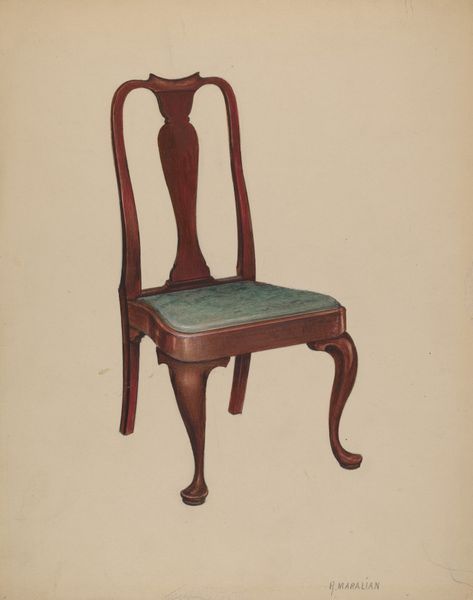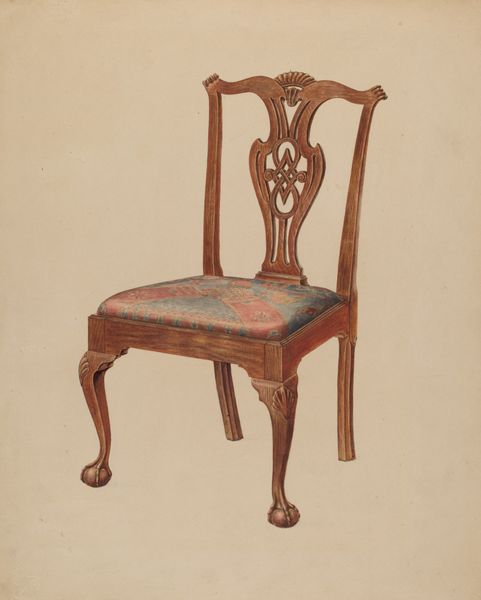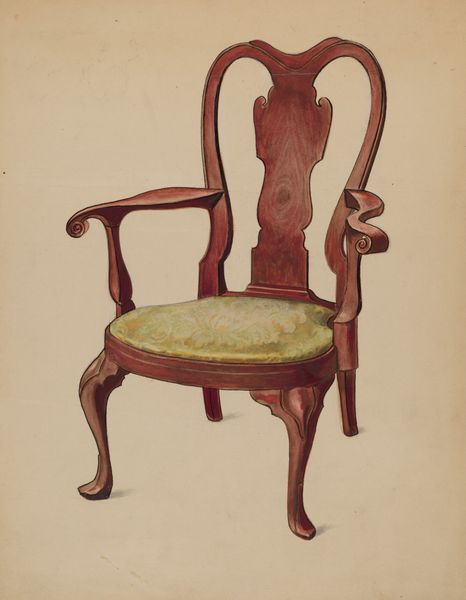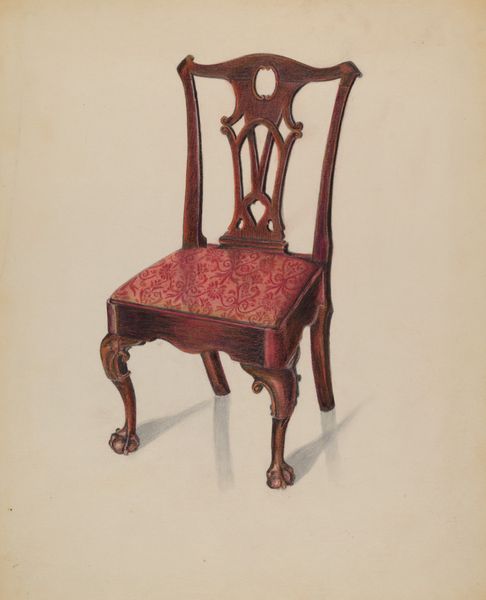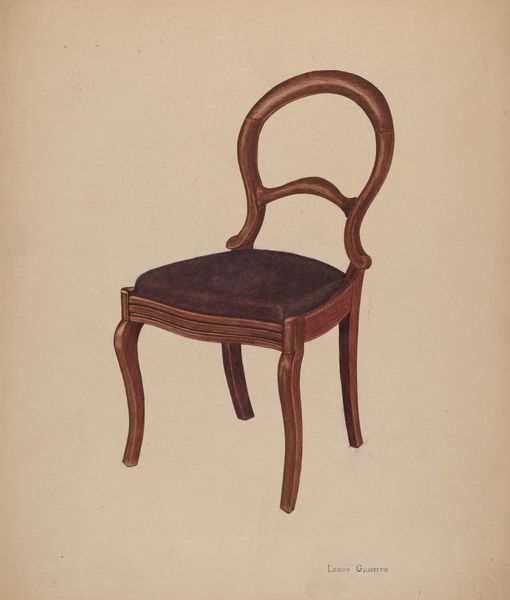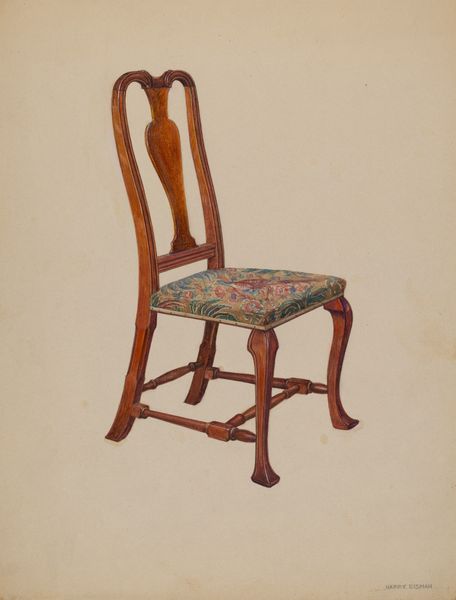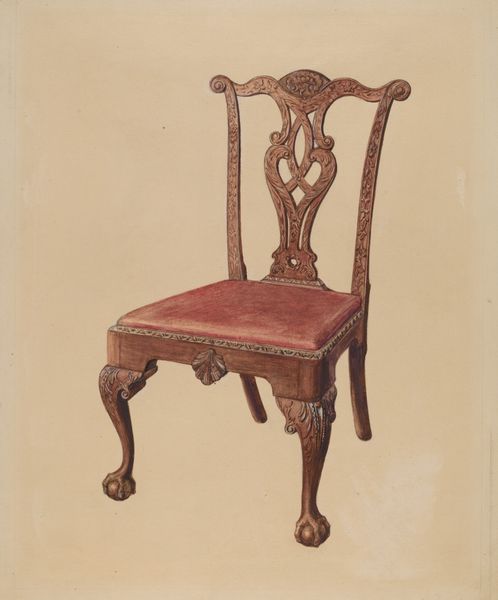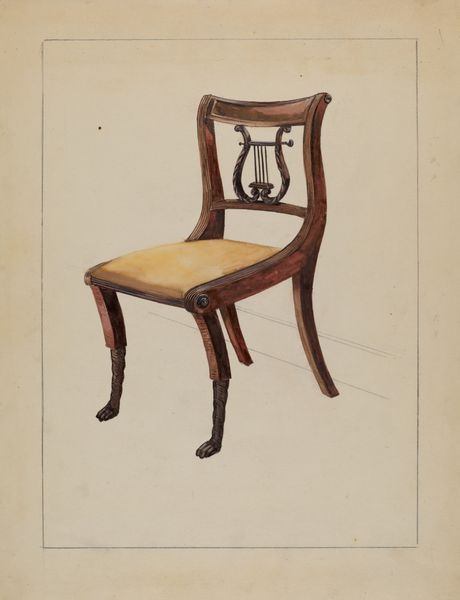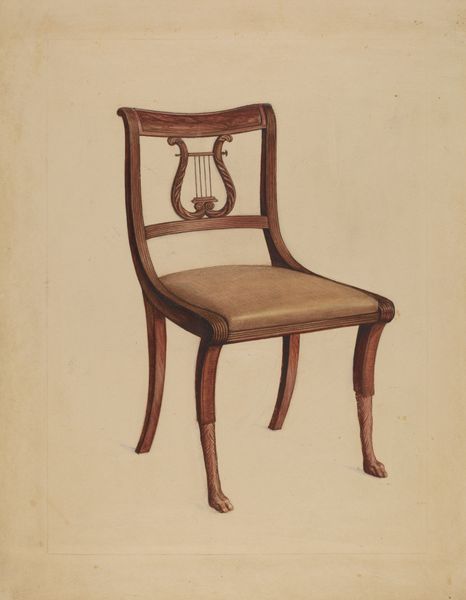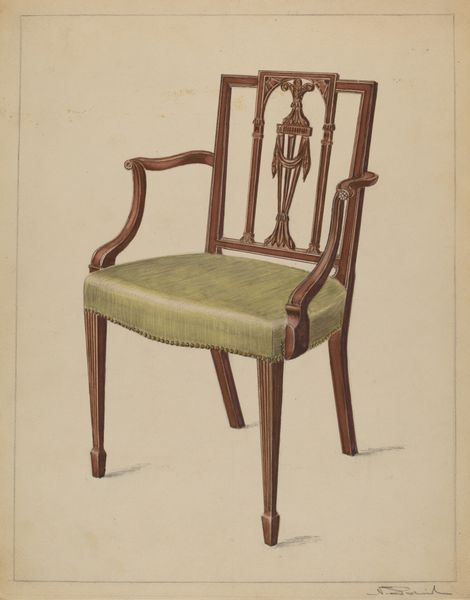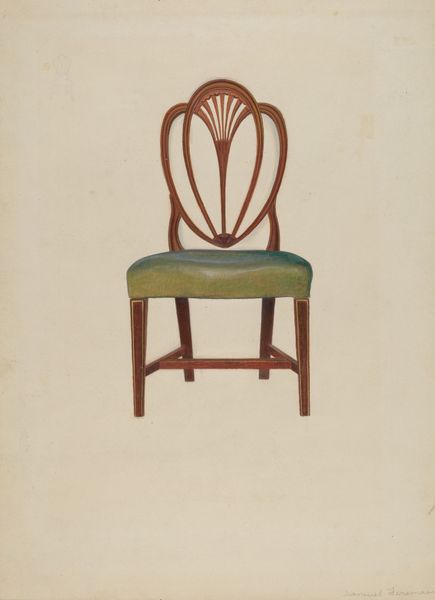
drawing
#
drawing
#
pencil drawing
#
watercolor
Dimensions: overall: 29 x 22.2 cm (11 7/16 x 8 3/4 in.) Original IAD Object: none given
Copyright: National Gallery of Art: CC0 1.0
Curator: Oh, look! We have Arsen Maralian's "Chair," dating back to 1937. It seems to be rendered with a combination of pencil and watercolor. The aged, torn fabric looks interesting. It is such a subtle interplay of colors, I see rosebuds but overall I feel kind of nostalgic melancholy radiating from it, how about you? Editor: My immediate thought jumps to the social context surrounding functional art. Considering the time it was made, it represents a deliberate choice to portray everyday objects as worthy subjects, breaking away from elitist art traditions of portraiture or epic landscape, but then focusing back to this object, there is almost an unsettling quality here... almost as though the imperfection in the seat hints at deeper flaws in the design, what does that imply I wonder. Curator: I think that tension, that imperfectness, it *makes* the piece! Like wabi-sabi, celebrating the beauty of imperfection and impermanence. But instead of the Japanese tea ceremony we are seeing the beauty of furniture for your tush here! Also the Queen Anne style chair does a playful dialogue, a bit of a rebellion perhaps by highlighting everyday furniture. Editor: The chair’s Queen Anne style firmly roots it in specific socio-economic dialogues as a symbol of bourgeois domesticity, even power... What makes this so compelling to me is how it embodies the power structures embedded within design and its effect on class dynamics of that era, something very common during this depression era when every dime made an impact and what you acquired told a lot about yourself and society. Curator: True, the elegance *is* undeniably there. It is beautiful, if reserved! Almost whispers wealth. I also think the technique with watercolor and pencil is great, giving us the delicacy in form and details of color and lines; it is so intimate, but there is still something to be said to its message, it definitely reflects something more! Editor: Absolutely, let's not forget the materiality of the original object: the choice of medium— watercolor and pencil on what I'd assume is paper, as well as its scale... the artist intentionally evokes a sort of intimacy. Its domestic subject—that is, a chair—reinforces these notions as such making a subtle jab on societal constraints of class distinction that may even bring the sense of uneasiness of the fragility. Curator: Thinking of our audiences experiencing this, I'm suddenly more interested in thinking beyond face value. It truly evokes feelings more deeply, not just beauty on surface-level as one may think. I might just have a good stare myself some more time at it! Editor: Absolutely, each of us has the capacity to really interpret it as so much more than *just* a pretty chair.
Comments
No comments
Be the first to comment and join the conversation on the ultimate creative platform.
